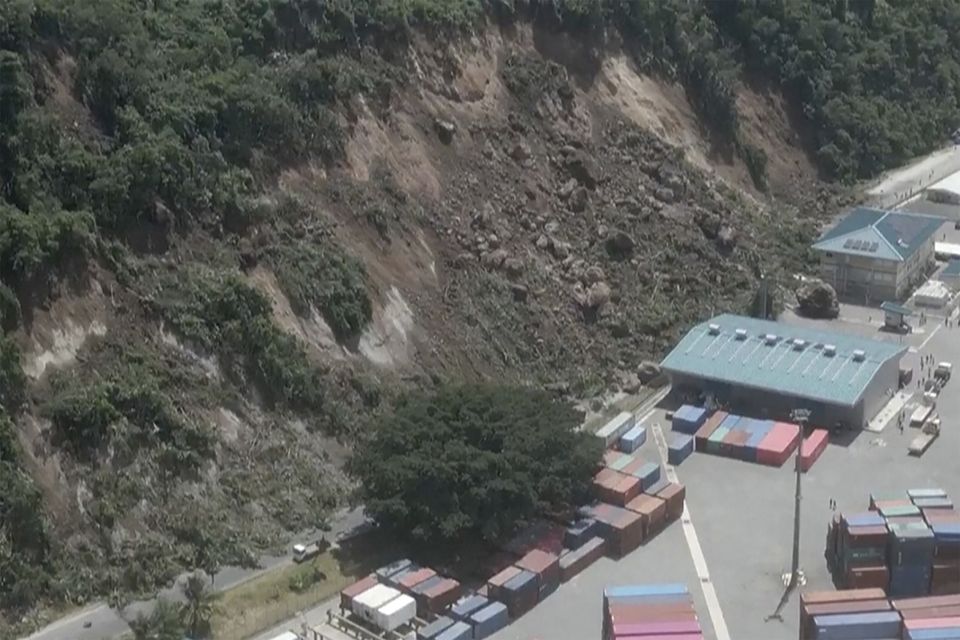Injured people are arriving at hospital in Vanuatu after the South Pacific island nation was reportedly rocked by a 7.3-magnitude earthquake that struck just off the coast.
A tsunami warning was called off less than two hours after the quake on Tuesday. With communications still down hours after the jolt and official information scarce, witness accounts of casualties began to surface on social media and through patchy phone calls.
The earthquake occurred at a depth of 35 miles and was centred 18 miles west of Port Vila, the largest city in Vanuatu, a group of 80 islands which is home to about 330,000 people. The jolt was followed by a magnitude 5.5 aftershock near the same location.
It was not immediately clear how much damage was caused as phone lines and government websites remained down and official channels have not been updated, but reports of widespread destruction filtered out on social media and in interviews.
Dan McGarry, a journalist based in Port Vila, told the Associated Press that he had heard of one death from a police officer outside Vila Central Hospital. Mr McGarry added that he saw three people on trolleys “in obvious distress”.
Doctors were working “as fast as they could” at a triage centre outside the emergency ward, he added, but the nation is not equipped for a mass casualty event.
Video shared by Vanuatu Broadcasting and Television Corporation showed crowds outside the hospital. Phone numbers for the police, the hospital and other public agencies did not connect. There were no official reports of casualties.
Reports of people trapped inside buildings could also not immediately be confirmed. A video posted on social media appeared to show crumpled buildings in Port Vila, including one that had collapsed on to cars. A Red Cross spokesperson in Fiji said the head of the aid agency’s Vanuatu office had reported widespread damage before communications were cut off.
A building housing a number of diplomatic missions in Port Vila — including those of the US, Britain, France and New Zealand — was significantly damaged, New Zealand’s Foreign Ministry said. Officials were in the process of accounting for New Zealand High Commission staff, a spokesperson said.
A video posted to social media showed the building with damage to its structure, including buckled windows and debris that had crumbled from walls to the ground. Other photos and videos showed items and shelves that had tumbled to the floors of shops and landslides that appeared to block some roads.
A landslide near an international shipping terminal in Port Vila (Dan McGarry/AP)
Katie Greenwood, the Fiji-based head of the Asia-Pacific regional office for the Red Cross, told the Australian Broadcasting Corp that the centre of Port Vila was full of large buildings and hotels.
“We haven’t heard at the moment about any casualties, but I will be shocked if we don’t hear that bad news coming through from Port Vila at some point,” she said.
Mr McGarry said a “massive landslide” at the international shipping terminal was likely to impede the country’s recovery. The airport’s runway is also damaged, he said.
Vanuatu’s position on a subduction zone — where the Indo-Australia tectonic plate moves beneath the Pacific Plate — means earthquakes of greater than magnitude 6 are not uncommon and the country’s buildings are intended to withstand quake damage.
“I think it could have been worse,” Mr McGarry said, but this was the most serious he had experienced during 21 years in Vanuatu “by a long shot”.
In the hours after the tremor, the United States Geological Survey said a tsunami threat had passed. The agency had earlier warned of waves of up to 3ft above tide level.
Authorities in Australia and New Zealand said there was no tsunami threat to their countries.
New Zealand’s Foreign Ministry said 45 New Zealanders were registered as being in Vanuatu. The ministry did not give details about their status.
Australia’s Department of Foreign Affairs said it was able to provide a wide range of support, subject to need, through emergency and development programmes.
